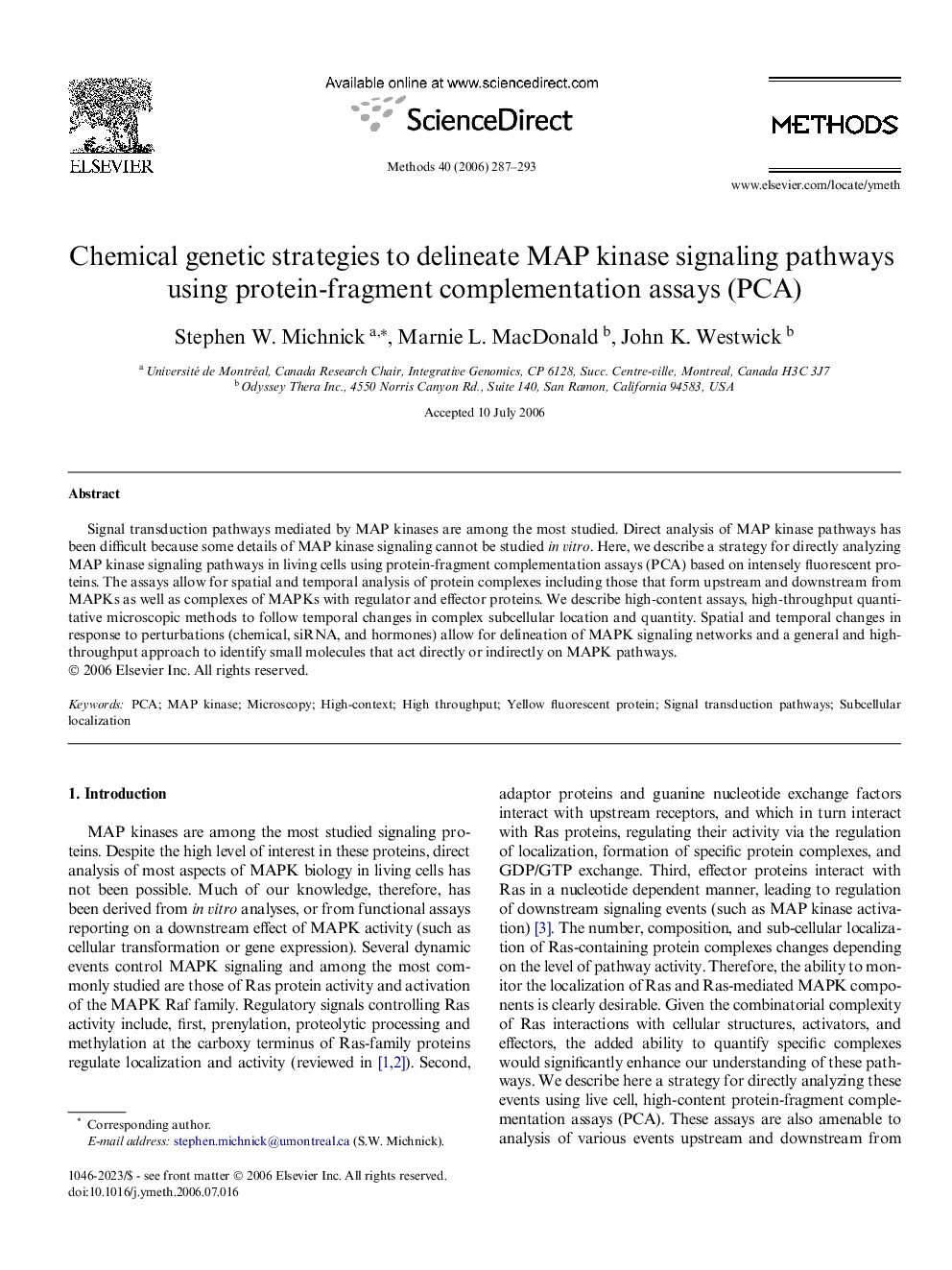| Article ID | Journal | Published Year | Pages | File Type |
|---|---|---|---|---|
| 1994424 | Methods | 2006 | 7 Pages |
Abstract
Signal transduction pathways mediated by MAP kinases are among the most studied. Direct analysis of MAP kinase pathways has been difficult because some details of MAP kinase signaling cannot be studied in vitro. Here, we describe a strategy for directly analyzing MAP kinase signaling pathways in living cells using protein-fragment complementation assays (PCA) based on intensely fluorescent proteins. The assays allow for spatial and temporal analysis of protein complexes including those that form upstream and downstream from MAPKs as well as complexes of MAPKs with regulator and effector proteins. We describe high-content assays, high-throughput quantitative microscopic methods to follow temporal changes in complex subcellular location and quantity. Spatial and temporal changes in response to perturbations (chemical, siRNA, and hormones) allow for delineation of MAPK signaling networks and a general and high-throughput approach to identify small molecules that act directly or indirectly on MAPK pathways.
Keywords
Related Topics
Life Sciences
Biochemistry, Genetics and Molecular Biology
Biochemistry
Authors
Stephen W. Michnick, Marnie L. MacDonald, John K. Westwick,
